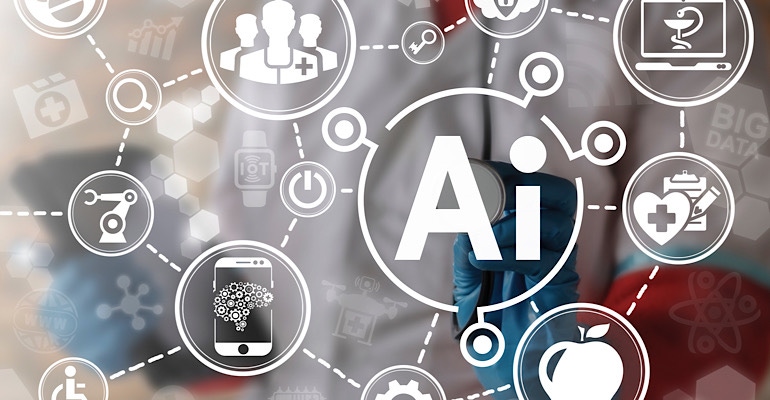Intellectual Property at the Intersection of Medical Devices and Artificial Intelligence
There are challenges to obtaining patents related to AI-based medical devices. What are your options?

A medical device generally can be described as any device intended to be used for medical purposes, such as to benefit patients by (a) helping healthcare providers diagnose and treat patients, (b) helping patients overcome sickness or disease, or (c) improving their quality of life. One working definition for artificial intelligence (AI) is “a machine’s ability to make decisions and perform tasks that simulate human intelligence and behavior.”
At the intersection of the two fields, AI-based medical devices can do amazing things for us, with one goal being to improve decision-making at the point of care. For example, AI-based medical devices can provide early disease detection, provide responsive and personalized control of medical devices, deliver health risk assessments based upon patient population data and health history, and run error simulation to improve implant outcomes.
In May 2020, a report titled Medical Devices in 2025: An AI Impact Analysis was made available by ResearchandMarkets.com. According to the report’s summary, increased growth is expected for AI-based medical devices, and it is predicted that innovations and patents will continue to be important.
The availability of patent protection and many other factors continue to motivate development in this space. In October 2020, the U.S. Patent and Trademark Office released a report, Inventing AI, that recognized the importance of patent protection for AI across several disciplines, including medical devices. From 2002 to 2018, U.S. patent applications directed to AI more than doubled from 30,000 to more than 60,000, and the percentage of all patent applications containing AI increased to nearly 16%.
The first U.S. patent officially classified as being directed to an AI-based medical device (No. 4,465,077 in class 706/924) was directed to an apparatus for determining female fertility. Its application was filed in 1981. Since that time, numerous medical device AI patents have been granted for inventions related to medical imaging, patient health monitoring, cancer and ophthalmic diagnostics, and other disciplines. Here are some examples:
For cancer diagnostics, U.S. Patent 5,491,627, applied for in 1993, is directed to AI for the detection of microcalcifications in digital mammograms.
U.S. Patent 10,055,843 issued in 2018 to the Mayo Foundation and Arizona State University. It is directed to automating the detection of abnormalities (polyps) in optical images taken during colonoscopies.
Related to controlling medical devices based on patient monitoring, U.S. Patent 7,066,173 is directed to automatically controlling a ventilator in response to patient vitals such as blood oxygen levels.
There is no doubt that, when effectively applied, such exciting technology can provide great advances in medicine. So it isn’t a surprise that the Patent Office is not the only government agency that has taken note. In 2019, FDA recognized the need for a regulatory framework for modifications to AI-based medical devices. See Proposed Regulatory Framework for Modifications to Artificial Intelligence/Machine Learning (AI/ML)-Based Software as a Medical Device (SaMD). Such guidance is needed because the then-current FDA guidance did not sufficiently address AI-based medical devices and when “software” modifications from artificial learning would and would not trigger the need for a new clearance.
But, in addition to regulatory hurdles, there are also challenges to obtaining patents related to AI-based medical devices. It is generally accepted that U.S. patents may not be obtained to cover—and to pre-empt others from using–abstract ideas and laws of nature. They are subject matter that is ineligible for U.S. patent protection. But in 2014, the Supreme Court arguably broadened this concept. Its 2014 opinion in Alice Corp. v. CLS Bank gave the Patent Office additional ammunition to reject applications for AI-based patents, and for trial courts to invalidate them. The Alice decision has made it more challenging to obtain AI-based patents in the United States.
To overcome this challenge at the Patent Office, patent applications should be written to emphasize what their inventive concept is, to show that their invention improves a computer’s functionality, and/or to demonstrate how the invention is directed to specific solutions and not merely an abstract idea. Additionally, the Patent Office, the courts, and Congress should continue to be encouraged to modify the law of patent eligibility. Recently, multiple bills have been proposed that would lessen or overrule the impact of the Supreme Court’s opinion Alice, including for AI-based medical device patents. Given recent developments in the judicial branch, it is likely that only a legislative change to patent eligibility laws will permit patents covering AI-based medical devices to be as robust as they should be.
One aspect of AI-based patent law that the U.S. Patent Office has made clear is its policy and reading of the U.S. Patent Act—AI machines may not be a named inventor of a U.S. Patent. The inventor(s) must be natural persons. And because the inventor(s) of U.S. patents must be named, no U.S. patents can be issued to an AI machine. Nevertheless, patents may be issued for the AI machines or methods themselves.
Alternatives to patents are inferior at protecting AI-based medical devices from copying, but they can still be utilized in a comprehensive protection mechanism. For example, trade secrets can be useful to protect the design and learning mechanisms of products, thus preventing competitors from quickly coming to market with a competing product. Copyright protection can be helpful, but its protection of computer software is narrow. Non-compete and confidentiality agreements with employees may also be useful.
With a growing market for AI-based medical devices and a recognition of their importance by the Patent Office, patents on AI-based medical devices can have an important and valuable future.
The opinions expressed in this article are the opinions of the authors and may not reflect the opinions of McAndrews, Held & Malloy, its clients, or any individual attorney. This article is for general information purposes and is not intended to be, and should not be taken as, legal advice.
About the Author(s)
You May Also Like





.jpg?width=300&auto=webp&quality=80&disable=upscale)

